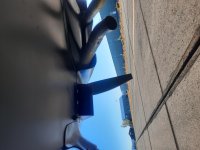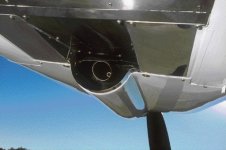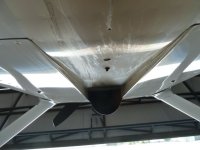thunder669
Active Member
So I have spent many many hours on here reading posts about inlet vs exit area and all the different theories on best way to accomplish it. based on that and Dave anders articles in kitplanes I have been working to modify my RV4 cowl. I shaped it more like a James cowl but am using their large rings. this seems to be the standard for all the RV cowls except the 4 where they use their medium rings. I obviously want more speed but most importantly I want good cooling even on a long hard climb on a hot day. Doing the math these appear to be the same size inlets that Dave used as he published he has 34 sqin of inlet area. but based on all the reading it appears I have way too much exit area and that could cost me speed. I see lots of posts on shrinking that area but not a lot of info or pics on how. any and all ideas would be great and pics regardless of which model of RV you have could definitely help inspire some good ideas.
Thank you
Thank you







